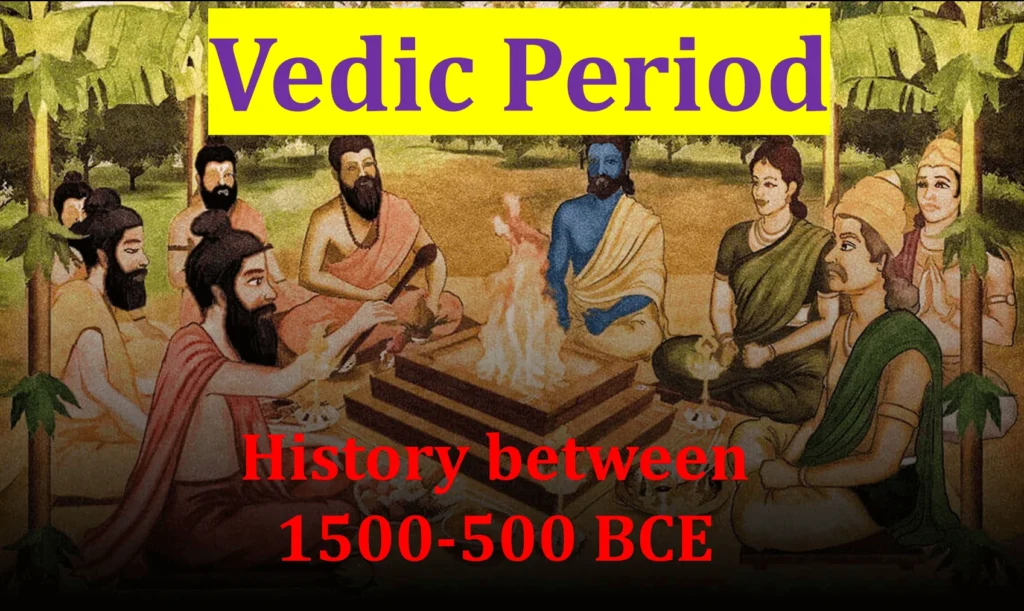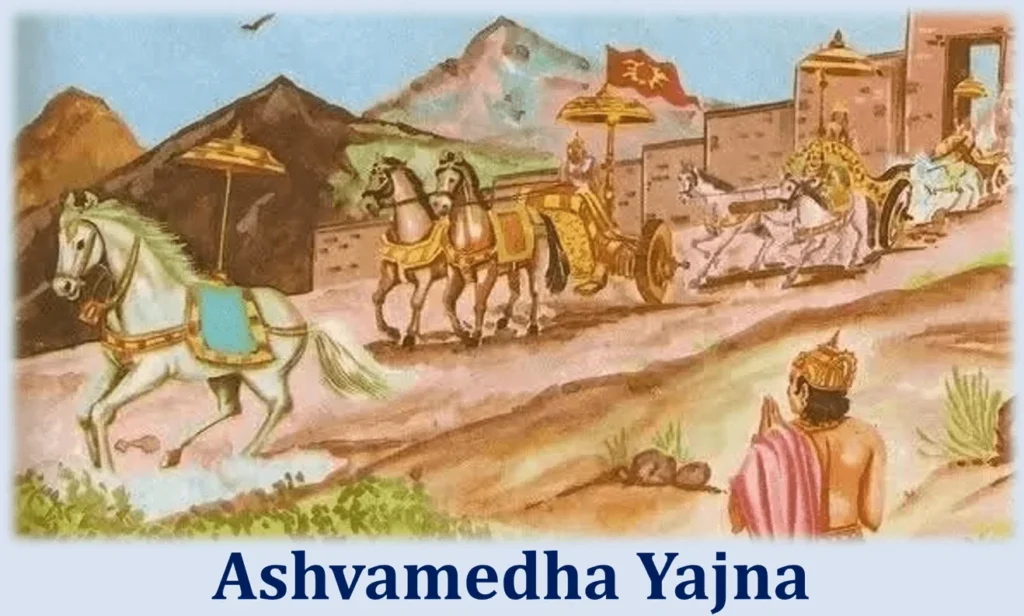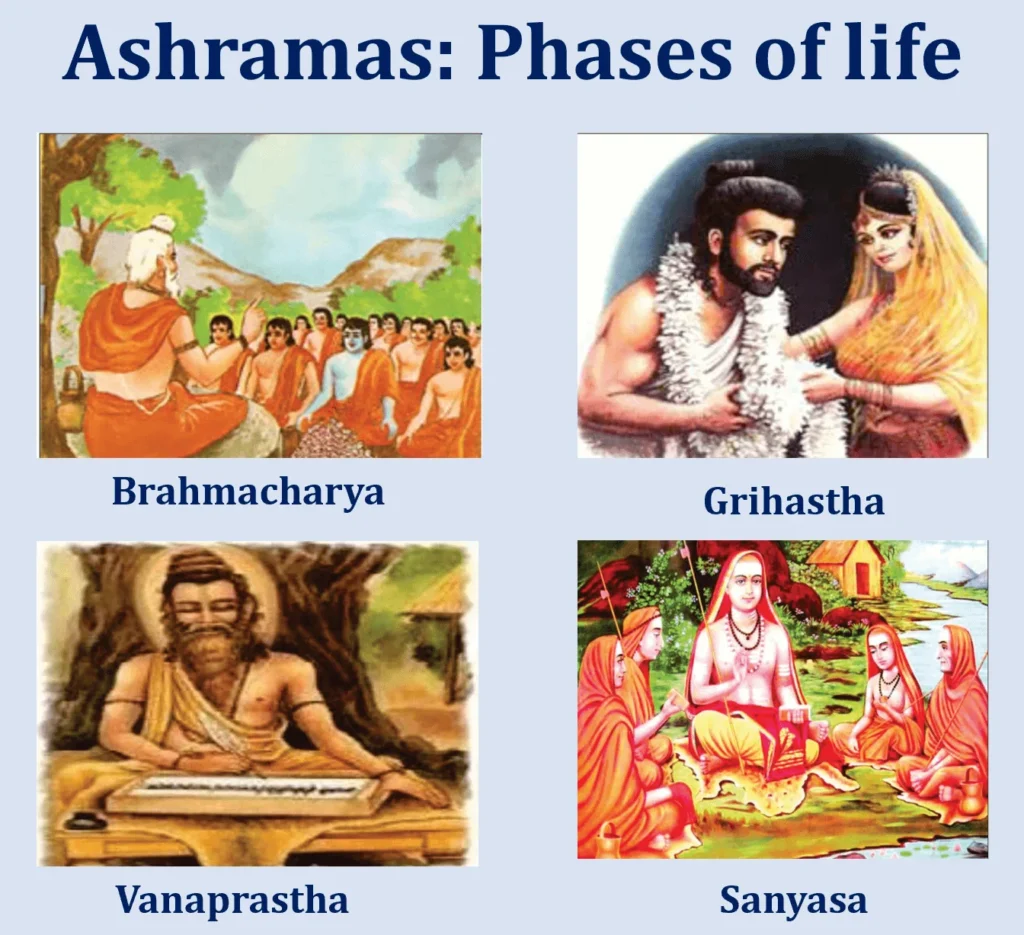
Hello, my dear readers, earlier in my post on Indus Valley Civilization, I concluded on the decline of the civilization. Today I have decided to write for you all about the event that followed to end of IVC i.e., The Vedic Period. Around 1800 BC, the Indus Valley Civilization’s mature stage came to an end.
It was brought on by an imbalance between the supply of food and grain and the growing population. The common people were compelled by this to leave the city and move to the countryside. As a result, there developed a distinct farming culture, particularly in the areas of Rajasthan, Madhya Pradesh and Maharashtra. People in the Rajasthan area lived around Gilund and Ahar.
These places had abundant supplies of copper, also known as tamba. Ahar was really also known as Timbavati (a location of copper). This made it easier for people to employ tools made of stone and copper, ushering in a new stage of Chalcolithic culture.
Arrival of Aryans
Aryans, a collective term for group of warriors from Central Asia, started to arrive in India about this time. Historically, the term “Arya” denoted a person with noble ancestry. But according to modern study, it denotes a separate branch of language called Indo European language. This Indo-European language gave rise to the distinctive “Devanagri” script used in India. It is from this script that India’s first classical language Sanskrit evolved.

Evolution of Sanskrit and Rig Veda
The earliest literary work of Indian civilization, known as the “Rig Veda,” was written by Aryans using this new language, Sanskrit. The Rig Veda is further broken down into ten chapters, or mandals. The purpose of composing this work was to include in the praise of several Gods and Goddesses. The Aryans start to humanize many phenomena of nature, including rain, floods, fires, storms, and even dawn and nightfall. Important Gods like Indra, Varun, Marut, Agni, Aditi, and Usha were assigned to oversee such natural occurrences. Taking care of the universe’s rhythm and order was entrusted as an extra duty to the God Varun. The Rig Veda is sometimes referred to as Shruti literature because its greatest distinguishing quality is its continuation through oral traditions from generation to generation.
The Vedic culture
The Rig Vedic phase was marked by the tribal polity. Aryans remained to be nomadic people in the extreme northwestern part of India or the land of seven rivers. The travel policy was headed by a tribal chief, “Rajan”. The Rajan was elected by the members of Sabha and Samiti. Apart from assemblies like Sabha and Samiti, there were Vidhata comprising of selected members.
Economically, the most important wealth during that period was cattle. Even the battles were fought to acquire more and more Cattles. In fact, the Rig Veda refers battle as “Gavishti” which means search for cattle. The most important battle of the Vedic period was the battle between 10 kings. In which a tribal chief “Bharata” defeated the group of 10 groups on the Bank of River Ravi or Parushni. Since then, we term Bharata, indicate power and glory, and the entire Indian subcontinent has been named as Bharat.
Women and Society in Vedic Period
In the Rig Vedic phase society was largely egalitarian and women enjoyed respectable positions in the society. Female divinities like Aditi and Usha were worshipped. Some women even composed Vedic hymns. Women participated in Vedic sacrifices along with men and enjoyed equal status. There is no reference of child marriage in Vedic period which indicate better positions of women. In fact, Rig Vedic phase is termed as a golden phase for women in India.
Transition from Vedic to Later Vedic Period
The later Vedic period, beginning about 1000 BC, succeeded the Rig Vedic phase. The finding of “Iron” at Atranjikhera (Etah, Uttar Pradesh) was one of three factors that contributed to this development. It was a hard metal also known as Shyam Ayas or Krishna Ayas. The Aryans used this metal to help them clear the Upper Gangetic Plains of its thick vegetation. As a result, they had a sizable, fertile area with a deep layer of alluvial soil, which allowed them to conduct agriculture in the later Vedic era. As a result, the nomadic way of living gave way to a settled way of existence.
Land, or Janpada, became the most significant asset in the later Vedic age. And now the battles were fought for the land. This term Janpad appears along with Rashtra for the first time in the later Vedic text which includes Samaveda, Yajurveda and Atharvaveda.
The Later Vedic Text
Samaveda is a collection of poems borrowed from the Rigveda and is not a separate book. These verses were intended to be sung, hence they are regarded as a work of melody. Yajurveda is about the intricate sacrifices and rites that were first practiced in the later Vedic period. Cattle were even killed as part of these tributes. The Atharvaveda mentions about folk culture and indicate the existence of evil forces like ghost. It prescribes the use of amulets to deal with evil forces. Moreover, it mentions of the phallus symbol which was not approved by the Aryans.
Political Establishment of Later Vedic Period
Based on the later vedic text the political history has been constructed whereby the post of Rajan was declared to be hereditary. The political assemblies like Sabha and Samiti lost their popular character and they were now dominated by Brahmanas. With it. The assembly of Vidhata completely disappeared. The most important battle during this phase was fought for the land between the Kauravas and Pandavas in the region of Hastinapur.
Politically, there were three most important functions or ceremonies which began to be performed in the later Vedic phase. The first function was an “Ashvamedha Yajna”. It was organized to acquire more territory. The royal horse was set free to move across adjoining territories with the message to accept the dominance of the Rajan performing this Yajna or to fight with him.

The second ceremony was the “Rajasuya Yajna”. This Yajna was organized as the coronation ceremony to show the power and glory of the newly elected Rajan. The third function “Vajapeya” was a chariot race in which the royal chariot of the Rajan was made to win to show the higher prestige and importance of Rajan.
Society of Later Vedic Phase
Socially, the later Vedic society was marked by the clear-cut stratification. In fact, in the last chapter of Rig Veda, there is a “Purushasukta” hymn in which a cosmic man is shown. It mentions that the Brahmanas emerged from the tongue of the cosmic man.Therefore, the were responsible for the proper pronounciation of the vedic hymns. This second class known as Kshatriyas emerged from the shoulder of this cosmic man. They were responsible to fight battles, rule the territory and protect the society. The third class of Vaishyas emerged from the abdomen of the cosmic man to indicate the productive activities. They were responsible for the economy of the society. The fourth and the last class Sudras are mentioned to have emerged from the feet of the the Cosmic Man. They were responsible to serve the three higher classes.
The above three classes were collectively termed as “Dvija” or born twice. The term dvija indicate a biological birth and the religious birth to include a child in the proper Hindu fold. This was done through a sacred thread ceremony known as “Upanayana Sanskar”. The varna system was based on the principle of birth in order to ensure permanency. This phase also witnessed the beginning of gotra, or common ancestry to identify different clans. And for matrimonial purposes the principle of gotra exogamy was followed.
Ashramas: Phases of life
The later Vedic society witnessed the concept of Ashramas whereby the life of an individual was divided into 4 stages. The earliest stage from birth till the completion of education is termed as Brahmacharya phase. In this phase the individual was supposed to reside in a gurukul and live a disciplined life.

The Brahmacharya phase was followed by the phase of householder known as Grihastha. Whereby the individual was supposed to get married and look after his family. The third stage is marked by the abandonment of household life known as Vanaprastha Ashram. In this phase, the person was supposed to start concentration and meditation in forest. The fourth and the last stage was marked by Sanyasi phase, whereby the person was supposed to get rid of all type of worldly affairs and aim for salvation.
Emergence of Upanishads
By the end of 5th century BC, progressive Brahmas began to question the validity of the complex rituals which even included sacrifice of cattles. With this thought progressive Brahmanas began to contemplate and ask question about life and the real purpose of life. Such process resulted into another text known as “Upanishads”. These texts were in form of questions and answers. There are 108 Upanishads that mentions about the ultimate creator Brahma and the soul(Atma). They emphasize that the ultimate objective is to integrate soul with Brahma that leads to attainment of Moksha or salvation. Such objective can be achieved by performing right deeds or karma. Whereby after the organic death the soul or Atma gets liberated from the cycle of birth and death.
Conclusion
Influenced by the principle of Upanishads two major heterodox religions came into existence during the 6th century BC. They were Buddhism and Jainism. Apart from this religious developments, the Janpadas grew in size and became Mahajanpadas. There were sixteen Mahajanpadas according to a Buddhist text “Anguttara Nikaya”. In my next blog post I will cover these mahajanpadas and these two religion.
